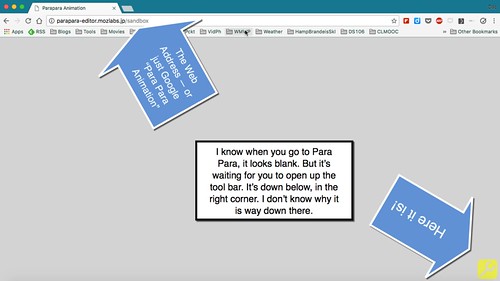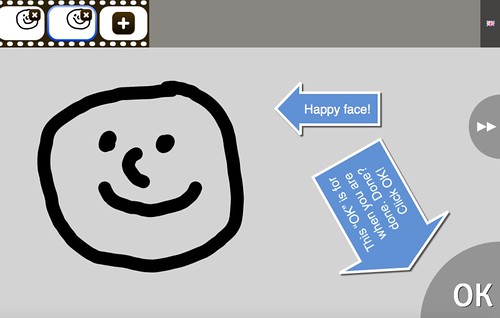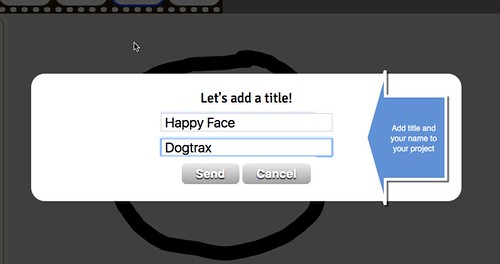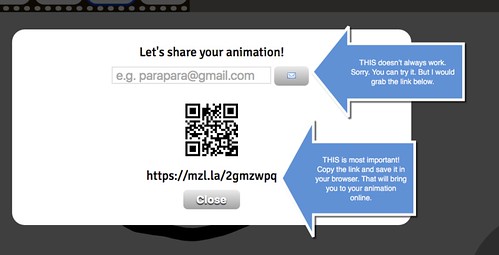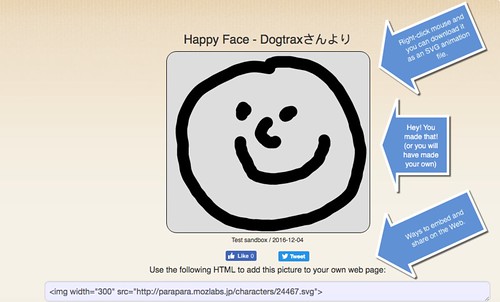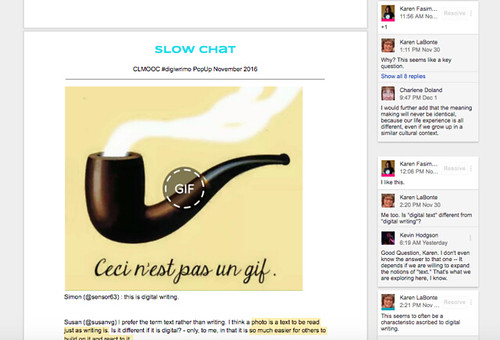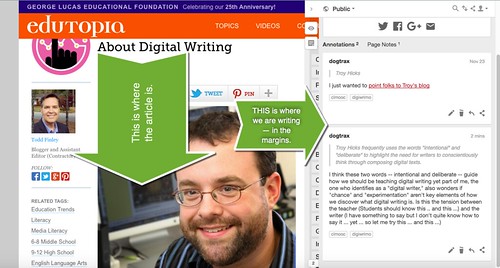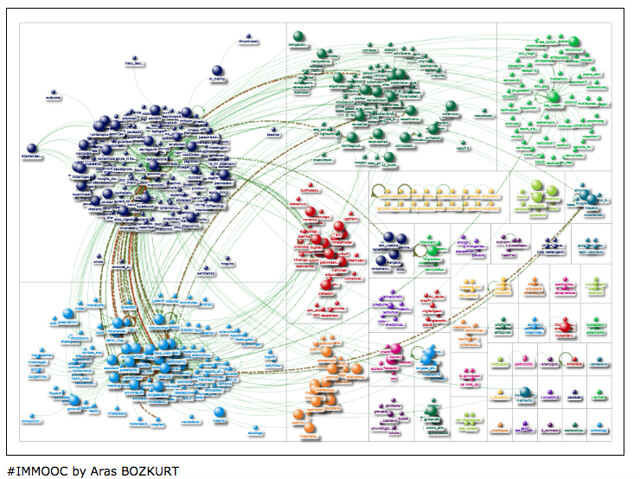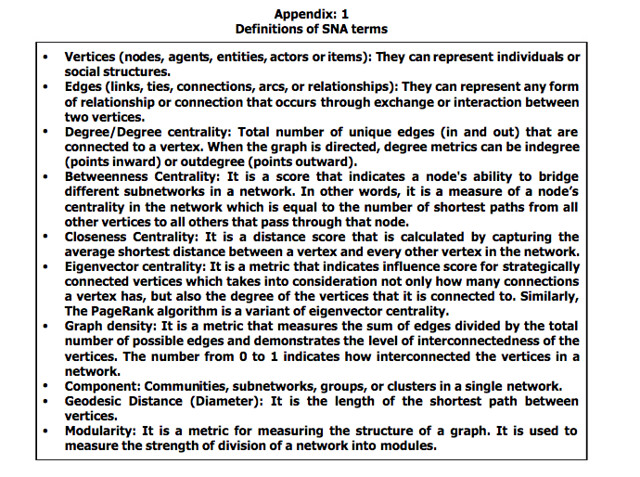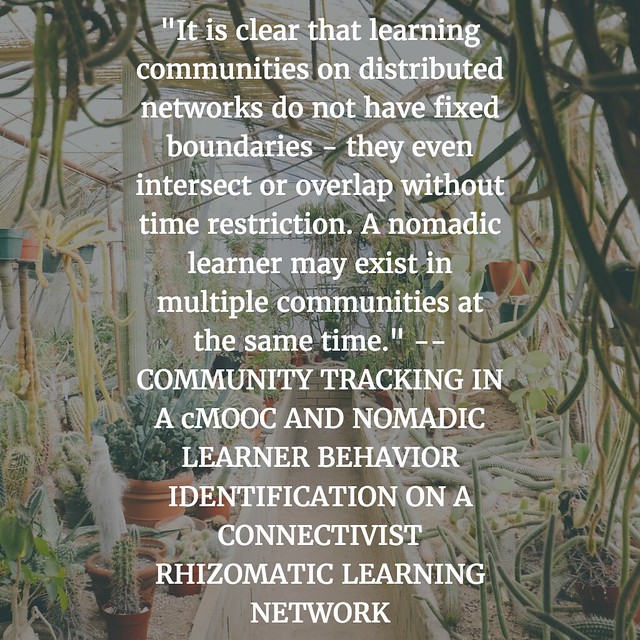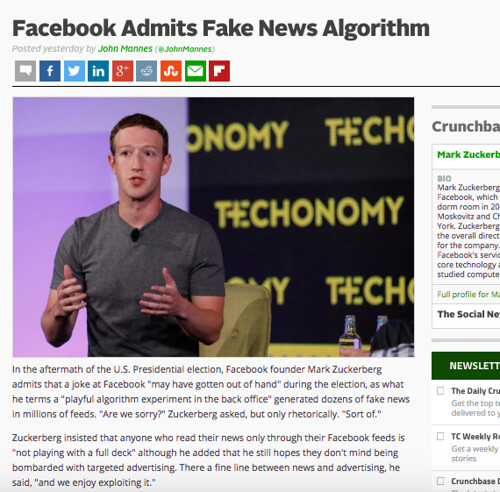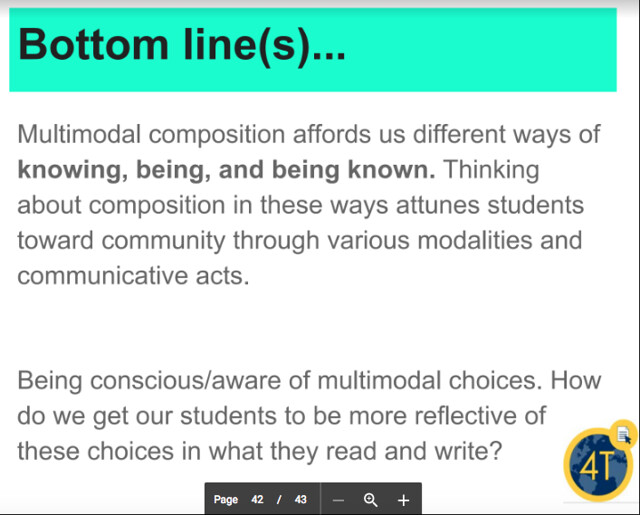
I’m wishing I had sat in on this discussion session in last week’s 4T Virtual Conference on Digital Writing (a free series of workshops and discussions that take place each Sunday through October .. I am a keynote on the last Sunday of the conference, exploring the nature of Digital Writing), but I am also grateful the sessions are being archived.
This week, I have wandered through Jeremy Hyler’s presentation on Grammar and Digital Writing (and moving from one audience to another with code-switching); and through Jianna Taylor’s talk on moving towards Digital Writing Notebooks; and through Lindsay Stoetzel’s work on Design Thinking in the Digital Writing Classroom. I am hopeful my friend, Anna Smith, will have her slides up there soon, as her work around Learning with New Media is a topic of interest to me.
But it is the panel discussion entitled MultiModal Moments and Making Composition(s) Move — with Cassie Brownell, Matthew Hall, Rohit Mehta and Jon Wargo — that got most of my attention. I was intrigued by the humanist approach and the social justice element of the presentation — of how students using multimedia to make their voices heard in the world have a chance to effect change in the world. Tapping into the elements of different modalities (image, video, text, audio, etc) empowers young writers, and engages them in the act of composition for a purpose.
As educators, understanding the different media attributes, and unveiling the forms and potential of each to our students, seems to be a critical way of giving our students not just permission, but authority, to move beyond traditional writing. Making videos and sharing images … this is what young people do in the world outside of our schools. Tapping into that interest may open up engagement on a whole new level. Connecting those interests to the larger world? That often is more powerful that one can imagine, until you try it. (See Connected Learning ideas)
A whole bunch of interesting presentations are on tap again this coming Sunday, including using online sources for crafting argument, weaving digital writing into the elementary classroom, and various looks at the power of blogging. I’ll be digging in. How about you?
Peace (not just digital),
Kevin
